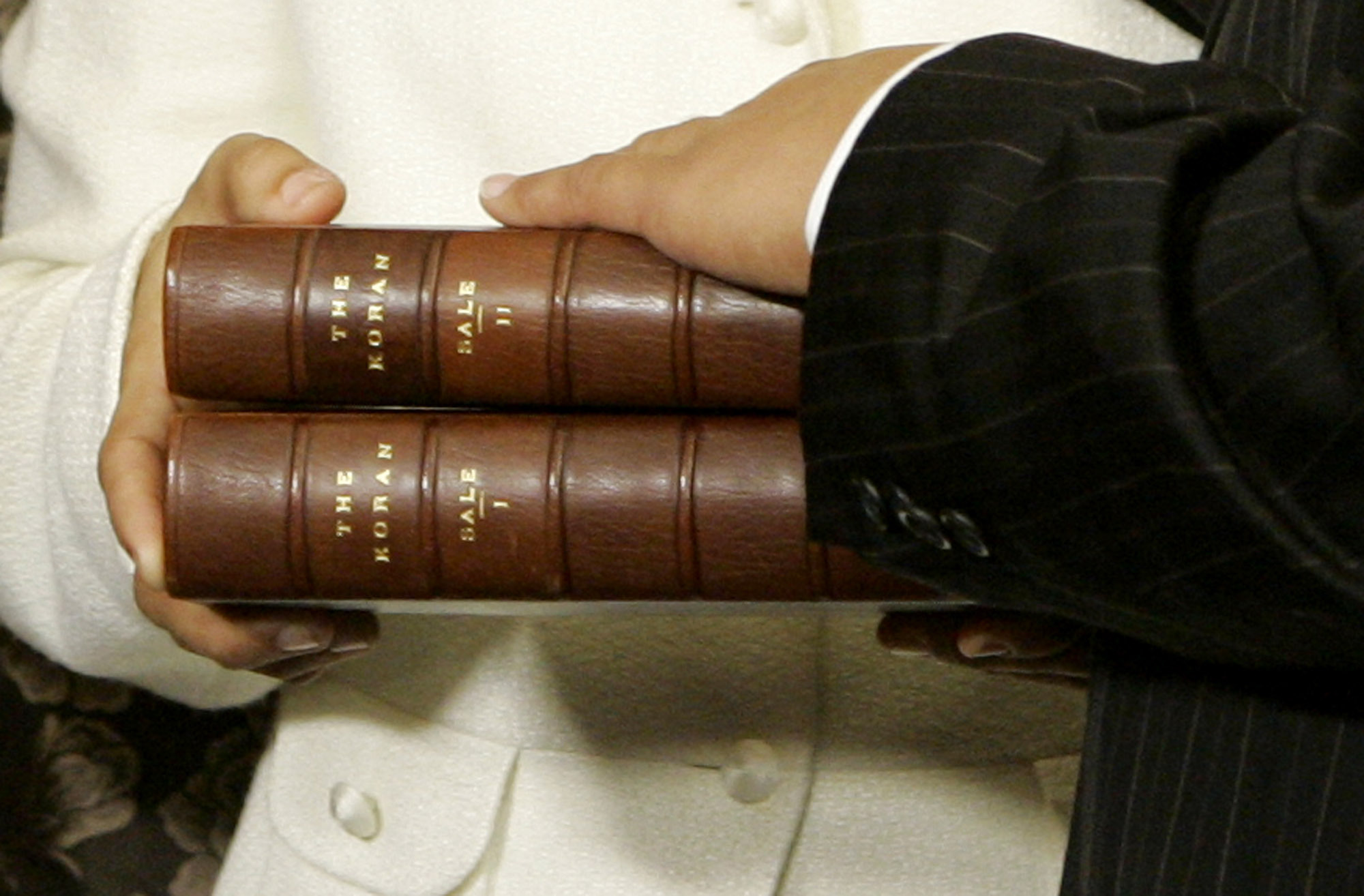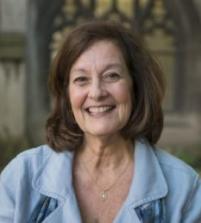What's in a (Religious) Name?
At the turn of the year, it is not uncommon to encounter casual “resolution professions,” whether over coffee with friends, waiting for the bus at a crowded stop, or simply tuning the car radio to various stations
 At the turn of the year, it is not uncommon to encounter casual “resolution professions,” whether over coffee with friends, waiting for the bus at a crowded stop, or simply tuning the car radio to various stations. Persons intent on improving their lives seize on the turning of the calendar page as the occasion for making changes, often ones much-needed in their lives. Insofar as we can take our culture’s temperature by exploring the inventory of resolution-making, we discover that “the news” is a strong impetus for contemporary behavioral change. This year’s trending leader among new year’s resolutions? “I am going to stop watching/reading/listening to the news.” Resolvers offer many reasons for this—their sadness about “the way things are in the world right now,” their frustration with political polarization or journalistic moralizing—but the prevailing malady seems to be our collective allergy to ambiguity. “I read, and listen, and watch the politicians, scholars and reporters, but I still can’t figure out what I am supposed to do about things,” offered one resolution-maker. “It’s so defeating not to know what to think. I can do without all that noise and confusion.” These resolvers are not wrong: the democratization of modern media means that “the news” assails us from all sides, creating an increasingly pixelated image of what is important, what is real, that complicates our most closely held beliefs and commitments—among them, the enduring question of what religion is, and does, in our body politic. That this is a familiar question should not diminish its consequence for our particular moment, as the collision of two recent news stories demonstrates.
At the turn of the year, it is not uncommon to encounter casual “resolution professions,” whether over coffee with friends, waiting for the bus at a crowded stop, or simply tuning the car radio to various stations. Persons intent on improving their lives seize on the turning of the calendar page as the occasion for making changes, often ones much-needed in their lives. Insofar as we can take our culture’s temperature by exploring the inventory of resolution-making, we discover that “the news” is a strong impetus for contemporary behavioral change. This year’s trending leader among new year’s resolutions? “I am going to stop watching/reading/listening to the news.” Resolvers offer many reasons for this—their sadness about “the way things are in the world right now,” their frustration with political polarization or journalistic moralizing—but the prevailing malady seems to be our collective allergy to ambiguity. “I read, and listen, and watch the politicians, scholars and reporters, but I still can’t figure out what I am supposed to do about things,” offered one resolution-maker. “It’s so defeating not to know what to think. I can do without all that noise and confusion.” These resolvers are not wrong: the democratization of modern media means that “the news” assails us from all sides, creating an increasingly pixelated image of what is important, what is real, that complicates our most closely held beliefs and commitments—among them, the enduring question of what religion is, and does, in our body politic. That this is a familiar question should not diminish its consequence for our particular moment, as the collision of two recent news stories demonstrates.
On the occasion of the swearing-in of the 116th Congress on January 3, the Pew Research Center published an article titled “Faith on the Hill: the religious composition of the 116th Congress.” The lengthy piece—part announcement, part data report, and part interpretation—presents figures from the CQ Roll Call suggesting that “the religious makeup of the new 116th Congress is very different from that of the United States population.” This is both because Christians are still overrepresented in Congress as compared to the country-at-large, and because the country’s growing population of those who identify as “unaffiliated” is nearly invisible in the halls of Congress, according to Roll Call’s data. “In the general public, 23% say they are atheist, agnostic or ‘nothing in particular.’ In Congress, just one person—Sen. Kyrsten Sinema, D-Ariz., who was recently elected to the Senate after three terms in the House—says she is religiously unaffiliated, making the share of ‘nones’ in Congress 0.2%.” The Pew article also notes an uptick in religious diversity in the 116th Congress, due in part to the swearing-in of the first two Muslim women ever to serve in the House of Representatives, and it points out the accompanying 3 percent decline in the number of members who identify as Christian (down from 91 percent in 2017 to 88 percent in 2019).
The main takeaway of the Pew article, as it was picked up and spun by a variety of media outlets throughout the country, is that it is significant that our country’s ruling class generally professes faith because this means that religion matters … somehow. Both the original article and its adopters reflect the ambiguity of this “somehow”: is it the case that religious belonging is a box that politicians must check in order to be legible to their constituents? Or that believing in God, while deemed by many to be private and optional, is still publicly salutary? Or that people who identify with religious institutions are simply more institutionally-inclined and are thus more likely to engage in the work of governance? Or could it actually be the case that "real moral commitments" inspire public service and that such religiously-inspired morals ought to impact congressional decision-making? The answer, of course, is itself compound, mirroring our culture’s complicated relationship with religion and religious belonging. Who determines the meaning and content of these identifiers—Muslim, Jewish, Buddhist, Hindu, Christian? Who can claim a religious name? What is our responsibility when we do, or when our neighbor does? And once we have identified ourselves in this way, is more required or expected of us?
These more nuanced questions about religion in public life in general, and “Faith on the Hill” in particular, perhaps are best sorted out individually and in each particular instance, and not by way of survey data. A case in point is presented by another recent news story, reported in late December by, among others, the Texas Observer, a not-for-profit news source. The story recounts the conflict between the federal government’s efforts to secure land to build a wall between the US and Mexico and the ministry of La Lomita (“the little hill”), a 120-year-old sandstone chapel near the Rio Grande on the outskirts of Mission, Texas, at the state’s southern border. The chapel is a beloved devotional site in an area where 85 percent of the residents are Roman Catholic, and which has been tended for nearly forty years by Father Roy Snipes, a member of the Oblates of Mary Immaculate, a congregation of priests who originally built the chapel in 1899. The tiny sanctuary is visited daily by residents and is also on the state’s register of historic places, receiving a steady stream of visitors. Fr. Snipes describes the chapel’s presence as “a call to humility: ‘We come from a long line of hospitable, humble and kind people, and La Lomita is a reminder of that,’ he said. ‘It’s the chapel of the people.’”
Over the past months, however, other visitors have arrived. Border agents patrol just outside the chapel’s eight-acre grounds and federal surveyors are trying to gain access to the property, a step towards conscription of the land by the US government in its efforts to build a border wall, according to the rule of eminent domain. Last October the government filed a lawsuit seeking access to the property, which prompted the Roman Catholic Diocese of Brownsville to respond with a public statement, “declaring that ‘church property should not be used for the purposes of building a border wall’ and calling the wall ‘a sign contrary to the Church’s mission.’” The Diocese also responded to the government’s lawsuit in court, claiming that federal seizure of La Lomita would violate both federal law and the First Amendment. A brief on behalf of the Diocese was filed by the Georgetown Law Institute for Constitutional Advocacy and Protection on December 31, the very same week that our overwhelming-religiously-identified 116th Congress took the oath of office. Fr. Snipes described what is at stake this way: “I thought the government was supposed to protect our freedom to promote goodness and truth and beauty,” he lamented. “Even if they won’t promote it themselves.”
How will “Faith on the Hill” make itself known in the battle for La Lomita, “the little hill”? What will we learn about the possibilities and complications of religious belonging, and its implied and attendant moral responsibilities, in an increasingly textured culture? Can our saturated media environment with its narrative ambiguity offer a much-needed corrective to our tendency to assign easy identifiers that diminish religious significance, moral seriousness, and human integrity for the sake of political expediency? Don’t cancel your news subscriptions quite yet—several battling narratives are certainly preferable to one, or none, where human flourishing is at stake.
Image: Keith Ellison, the first Muslim elected to the US Congress, places his hand on the two-volume Qur'an that belonged to Thomas Jefferson during his swearing-in ceremony in 2007. (Haraz N. Ghanbari | AP)
 Author, Cynthia Lindner (DMin’99), is Director of Ministry Studies and Clinical Faculty for Preaching and Pastoral Care at the University of Chicago Divinity School. Author, Cynthia Lindner (DMin’99), is Director of Ministry Studies and Clinical Faculty for Preaching and Pastoral Care at the University of Chicago Divinity School. |
Sightings is edited by Joel Brown, a PhD student in Religions in America at the Divinity School. Sign up here to receive Sightings via email. You can also follow us on Facebook and Twitter.


